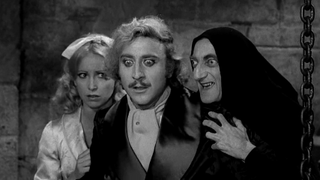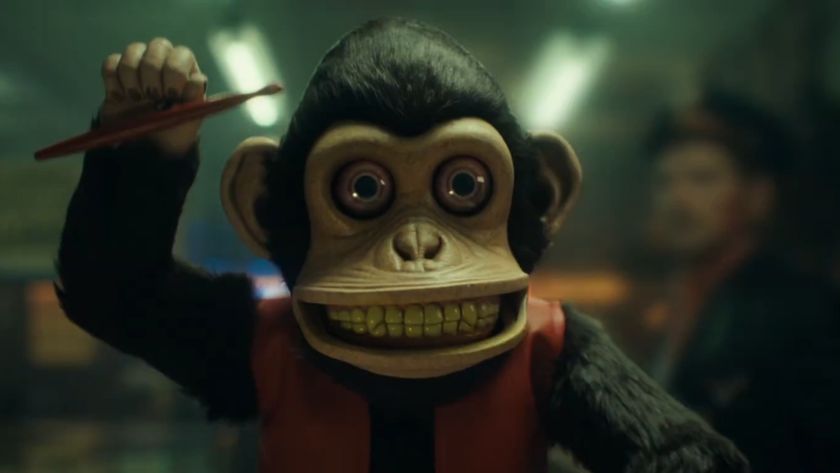The 25 best black and white movies you should watch

Cinematic innovations aren't what they used to be. Nowadays we've grown used to being dazzled by the likes of digital video, 3D, rotoscoping, shooting at 48 frames per second... and that thing where they throw water on you in cinemas. But those are just some of the leaps and bounds made recently. There was a time when those advances were simple. Making movies IN COLOUR was the cutting edge, once.
The ability to change the experience of watching movies by making them more like our day-to-day reality was mind-blowing. Want a bright red splatter of blood? Done. Or a yellow brick road? Sorted. That hasn't stopped filmmakers from choosing to lens their masterpieces in black and white, though. Some are even releasing special monochrome editions - hello Logan! - that are getting better reviews than the original, colourful versions. With that vast amount of movies to choose from, I've whittled it down to 25 of the best black and white movies ever made.
25. Pleasantville (1998)

Gary Ross' comedy drama casts a nostalgic backward glance at black-and-white TV shows of the 1950s. The flick stars Tobey Maguire and Reese Witherspoon as modern day siblings who, after a janky remote gets involved, find themselves trapped in the monochrome world of sitcom Pleasantville. Will they escape? Will they think sod it, and stay? With the recreation of 1950s Americana this spot- on, from the fashion to the set decoration, it gives extra whack to Pleasantville 's gradual slip into Technicolor. This is gorgeous visual storytelling.
24. Double Indemnity (1944)

Mystery, intrigue, double-crossing and all of that taking place in the supposedly-perfect idyll of suburban America. When Double Indemnity came out, moviegoers were treated to a real surprise: a post-war femme fatale who won't take any shit. Barbara Stanwyck tackles the lead role in this adaptation of James M. Cain's novel. As a bored housewife she spies an opportunity to off her hubby when Fred Murray's door-to-door insurance salesman comes a'knocking. What made this such a pioneering flick are the low angles, the seemingly-unending shots and that ever-present feeling of doom.
23. The Artist (2011)

This Oscar-winning love letter to cinema's silent era follows the ups and downs of film star George Valentin (Jean Dujardin), as he discovers he has to adapt to the advent of sound or be consigned to celluloid history. All the while he's falling for up-and-comer Peppy Miller (Berenice Bejo), whose career continues to go from strength to strength. It's a beautiful recreation of that era, from the onscreen inter titles to the (almost) total lack of any diegetic sound. Plus, who doesn't love a scrappy movie pup?
22. Go Fish (1994)

Girlfriends-at-the-time Rose Troche and Guinevere Turner write and produce this indie drama, which follows a group of lesbians in Chicago. Just one entry in the mid-90s 'gay flick' boom, Go Fish deals in dreamy montage, fourth-wall-breaking antics and a propensity of LGBT issues. "Wow, you have a lot of tea…" It might be smidgen dated now, serving as more of a historical document about '90s gay lifestyles than contemporary LGBTQ living, but nevertheless the black and white gives the film a boho-indie chic, especially in the shadowy montage sequences.
21. Pi (1998)

As per Total Film magazine's original review, Pi is "the best Jewish horror movie about maths of the year", which is quite some commendation. Darren Aronofsky's mind-bending thriller is a micro-budget oddity that follows Max (Sean Gullette), who argues that nature's wonders can all be understood through maths. Aronofsky filmed on high-contrast black-and-white reversal film, and Pi was the first feature to do so. He was inspired by graphic novel Sin City , wanting to capture the same sort of mood. I'd say he succeeded.
Sign up for the Total Film Newsletter
Bringing all the latest movie news, features, and reviews to your inbox
20. Man Bites Dog (1992)

One of the best early '90s black and white efforts, Man Bites Dog is so good that it couldn't not be on this list. Styled as a mockumentary, the film tracks the movements of serial killer Ben, who's being recorded by a documentary crew as he carries out his crimes. The strangest elements are by far when the filmmakers start to... err... join in on the fun. The black and white makes it feel like we're watching a rough cut of the documentary and also spares us those splashes of claret red.
19. Psycho (1960)

Hitchcock might not have crafted the first slasher movie, but boy, did Psycho bring that concept shrieking and cowering into the mainstream. Ah yes, and it's directly responsible for kickstarting an unnatural fear of showers. The story follows secretary Marion Crane (Janet Leigh) who steals a giant wad of cash from her boss, but before she can meet with her lover, decides to pull in for the night at the mysterious Bates Motel. Each shot is full of shadows, a device that amps up the fear tenfold, because you really don't know what will come lurking out of it...
18. Control (2007)

A look at the life of Joy Division singer Ian Curtis, and the directorial debut of Anton Corbijn. In a show-stopping role Sam Riley plays Curtis with Samantha Morton as his wife Deborah. The movie follows the duo from 1973 until Curtis' eventual suicide in 1980. The film was shot in colour and then printed in black-and-white, which gives it a luscious look that was, according to Corbijn, meant to "reflect the atmosphere of Joy Division and the mood of the era". He nailed it.
17. The Addiction (1995)

Abel Ferrara explores vampirism with a little help from Christopher Walken and Lili Taylor as teacher and student who aren't concerned with buckling down to pass exams. This relationship is all about controlling desire; in this case, the insatiable need for blood. By filming in black and white, it takes the focus away from the crimson splashes of blood, as the movie's really about drug addiction. Plus black and white just works better when your film's dealing in heavy themes and references the likes of Nietzsche, Feuerbach and Husserl, right?
16. Young Frankenstein (1974)

In light of Universal's recent attempt to reboots its Monster Cinematic Universe - sorry, Dark Universe - it's as good a time as any to revisit Mel Brooks' massive piss-take of those early creature features. This 1974 monochrome comedy (a monocomedy?) reworks the age-old tale of Frankenstein, placing Victor Frankenstein's grandson Frederick Frankenstein (Gene Wilder on top form) in the role of madcap scientist. As a parody, it had no choice but to replicate the black and white palette of the original and it's hard to imagine it being as on-the-nose if it were in colour.
Gem Seddon is 12DOVE's west coast Entertainment News Reporter, working to keep all of you updated on all of the latest and greatest movies and shows on streaming platforms like Netflix and Amazon Prime. Outside of entertainment journalism, Gem can frequently be found writing about the alternative health and wellness industry, and obsessing over all things Aliens and Terminator on Twitter.
Most Popular







